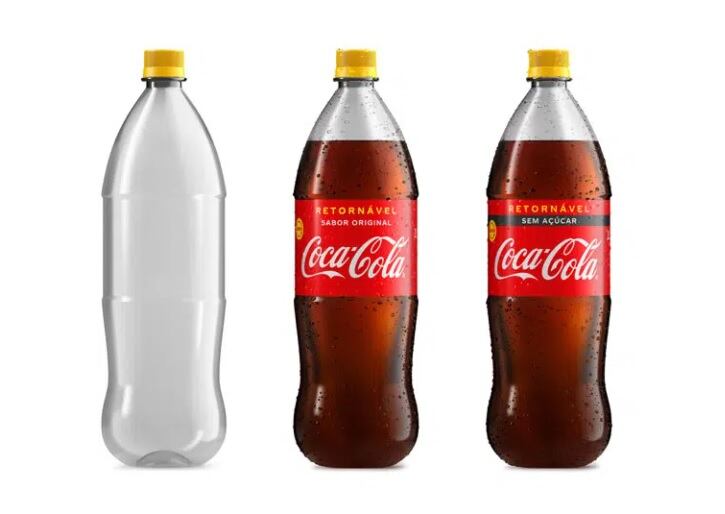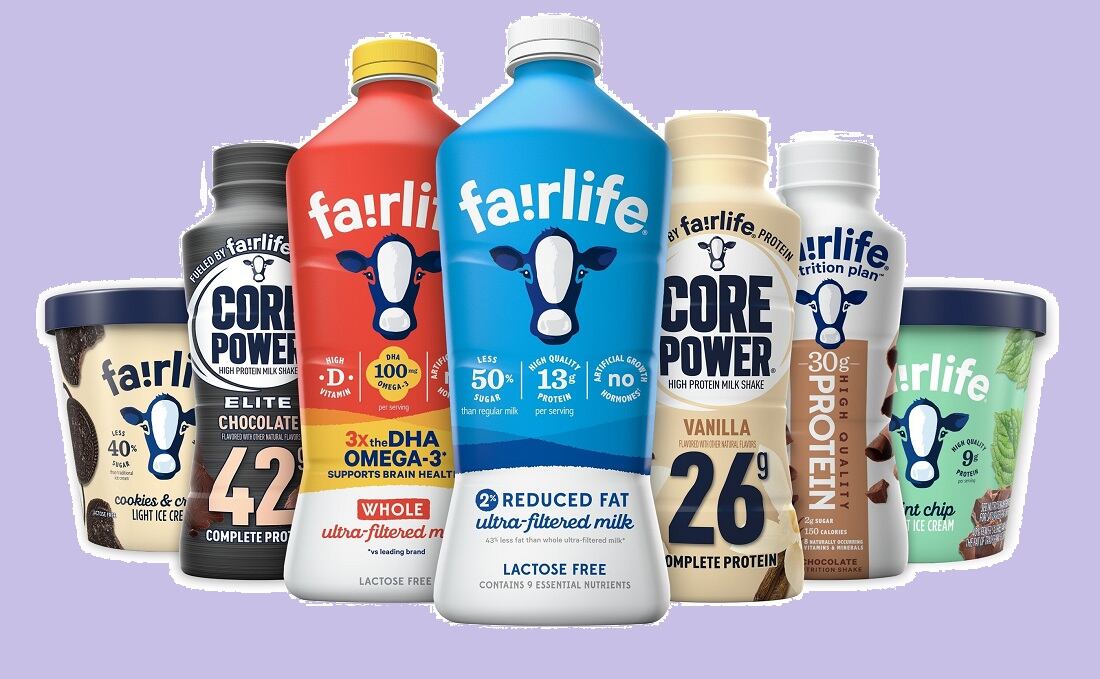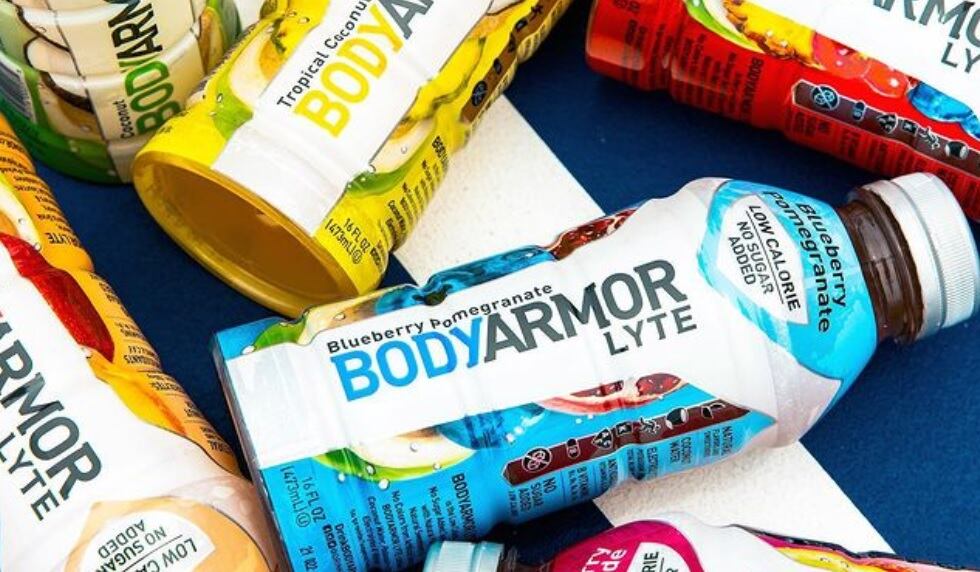In the past five years, Coca-Cola’s volume share of the sparkling category has climbed 1.6 points, its value share is up 2 points, it has generated a 7% compound annual growth rate in net new outlets and a 6.5% CAGR for retail value growth from low- or no-calorie options, company executives touted at the Consumer Analyst Group of New York conference last week.
This is a notable shift from just ten years ago when total sales volume of carbonated soft drinks overall was down 0.9% from 2013 to 2014 and when Coca-Cola posted a 1.1% drop in volume.
Morgan Stanley analyst Dara Mohsenian complimented the company’s ability to turn the tide for its sparkling segment, and gave a hat tip to the fast-work of the company’s “still relatively new management,” including CEO James Quincey who took the helm five years ago in 2017.
The “advantaged business model and positive strategy changes” outlined by Quincy at the conference “reinforced our view that the company is well positioned to deliver topline growth ahead of peers and upside to consensus topline/EPS estimates over the next several years with strong underlying growth,” Mohsenian said.
For his part, Quincey acknowledged that when he ascended to CEO “the sparkling category was under pressure,” but he lauded the larger team for its efforts in achieving “what some thought was an unlikely scenario at the time … to reinvigorate growth in core sparkling by leveraging our advanced capabilities in marketing, innovation, revenue growth management and in execution.”
Advanced analytics helps Coca-Cola better understand consumers
Fundamental to Coca-Cola’s revitalization of its sparkling portfolio has been a re-centering of innovation and investment based on the consumer – who Quincey said the company has gotten closer to through a “more standardized process” that “takes a balanced approach and starts with the consumer using advanced analytics to screen insights and identify where we want to learn, iterate and amplify our ideas through many lens.”
He added that “intelligent experimentation goes beyond new flavors and new brands. It also includes product, package and process. It encourages local markets to test the best ideas in a way that allows us to nurture and scale them. And then, in turn, we can expand across geographies faster than before.”
This strategy is paying off as evidenced by the company’s gross profit per launch being up 25% in 2021.
“The best example” of how this new approach worked in the last year was the introduction of an “improved Coca-Cola Zero Sugar formula and packaging, which has driven broad-based market share gains as well as accelerated growth in 80% of the markets where it was launched.”
Other sparkling flavors including Fanta and Sprite, also continue to gain traction around the world, and this has “driven an outsized growth and attracted new and previous drinkers back to our brand,” Quincey said.
With approximately 500 projects in the innovation pipeline for 2022, Quincey says he is confident in this approach’s ability to “create global solutions” that will allow the company to “get even better at what we do best.”
Personalized marketing reinforces innovation
Coca-Cola’s successful launches aren’t just a reflection of its new approach to innovation, but also its revamped approach to marketing.
Quincey explained: “We’ve … tailored our marketing messages to be more personalized … to communicate more directly and authentically than ever before.”
Likewise, he said, the company has leveraged its franchise bottling system to provide sparkling beverages around the world at price points and in packaging that is right for consumers’ wallets, occasions, and channels.
“Since 2017, we’ve introduced more than 100 new and innovative packaging solutions that range from more affordable to more premium, all while supporting our World Without Waste agenda and delivering products that are convenient and refreshing to drink,” he said.
“As a result of these actions, our loved brands have driven relevance back to the sparkling category and we’ve continued to gain value shar as the categories return to growth in line with the broader [non-alcoholic ready-to-drink] industry,” he added.
Non-carbonated extends reach to new day parts, consumers, occasions
Just as essential to Coca-Cola’s growth as sparkling, are non-carbonated options that currently make up three-quarters of the beverage giant’s portfolio.
“While sparkling has returned to growth in line with NARTD and remains an important driver of our business, we continue to have the desire and ability to be a part of every one of the approximately eight drinks a day that people consume on average,” Quincey said.
To do this, he said, Coca-Cola is expanding into new categories such as hot coffee, partnering with others in energy and experimenting outside of traditional NARTD where it sees adjacencies for its portfolio in flavored alcoholic beverages.
For example, Coca-Cola expanded its footprint in the fast-growing performance and hydration category with the $56bn acquisition of the remaining stake of Body Armor last November, and the acquisition of the remaining stake in Fairlife in early 2020 that gave it a larger presence in the value-added dairy aisle with additional flex in sports nutrition and fitness.
In terms of partnerships, Coca-Cola’s play with Monster energy drink generated more than $1b in retail value for the system in 20221 vs 2019. And partnerships with Molson Coors to make Topo Chico Hard Seltzer and with Constellation Brands in January to bring to market Fresca branded cocktails have brought Coca-Cola into the alcoholic segment.
“Having a broad portfolio is important. There is power in building platforms across categories to meet our customers’ needs to help them drive growth and value,” Quincey said.
To make space for new growth, Coca-Cola is trimming its portfolio
Part of cultivating an effective, self-sustaining and growing broad portfolio has been paring back products and brands that no longer deliver what Coca-Cola needs – a truism that the company has aggressively acted on during the pandemic with multiple notable divestitures.
“We’re a good deal of the way through our planned brand elimination and are on track to transition all the brands in our portfolio to arrive at this destination,” Quincey said.
He added: “The strength of our streamlined portfolio is significant and our new operating structure allows us to move with speed to deliver expected topline growth ahead of the long-term targets for the second year in a row.”




